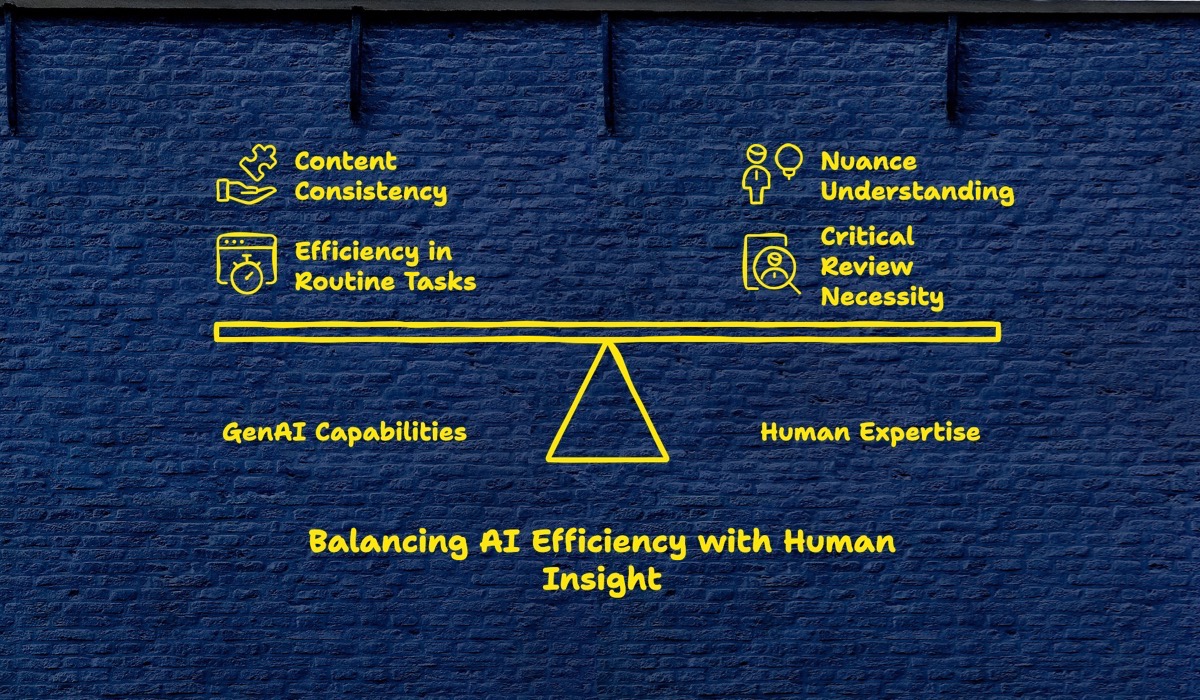Key Concepts to Consider When Using Generative AI in Medical Writing
Dec 09, 2024The future of medical communication is here! Generative AI is reshaping how we approach complex writing tasks in life sciences, but navigating this innovation requires strategy. From ensuring accuracy to maintaining compliance, discover the key concepts every medical writer and organization must consider to harness AI responsibly and effectively.

Generative AI is rapidly transforming the landscape of medical writing, offering unprecedented opportunities to enhance efficiency, accuracy, and compliance. However, as with any transformative technology, there are key concepts to consider when integrating generative AI into medical writing workflows.
Understanding the Capabilities and Limitations of GenAI
Generative AI excels at automating routine tasks, such as:
Extracting key information from source documents like protocols and SAPs.
Drafting initial versions of documents like CSRs, protocols, and safety narratives, reducing the time spent on initial content creation.
Summarizing data from TFLs, ensuring accuracy and consistency with the presented data.
Reusing content from previously created documents, promoting consistency and reducing redundancy.
Managing variables for recurring information, enhancing uniformity and minimizing manual updates.
However, it's crucial to acknowledge that GenAI is not a replacement for human expertise. It can occasionally generate inaccurate information (hallucinations) or miss subtle nuances that require human judgment. Therefore, medical writers must:
Maintain a critical eye when reviewing AI-generated content, ensuring accuracy, clarity, and adherence to regulatory guidelines.
Provide clear instructions and prompts to guide the AI, ensuring the generated content meets specific requirements.
Focus on high-level tasks such as analysis, interpretation, and strategic decision-making, leveraging AI as a powerful tool to augment their skills.
Ensuring Regulatory Compliance and Ethical Considerations
While GenAI can assist in achieving regulatory compliance, medical writers remain ultimately responsible for ensuring that documents adhere to all applicable guidelines. This includes:
Understanding the regulatory landscape and staying updated on evolving requirements.
Selecting appropriate AI models and tools that are validated for use in medical writing and comply with data privacy regulations.
Implementing quality control mechanisms to review and verify AI-generated content, minimizing the risk of errors.
Maintaining transparency by clearly identifying AI-generated content and disclosing its use to stakeholders.
Adhering to ethical principles and avoiding any misuse of AI that could compromise patient safety or scientific integrity.
Enhancing Medical Writing Skills and Adapting to New Technologies
The integration of GenAI requires medical writers to continuously develop their skills and embrace new technologies. This includes:
Mastering GenAI tools and understanding their functionalities to leverage their full potential.
Developing expertise in prompt engineering to provide clear and effective instructions to the AI, maximizing the quality of generated content.
Strengthening analytical and critical thinking skills to effectively evaluate and refine AI-generated content.
Cultivating soft skills such as collaboration, communication, and project management, as AI takes over routine tasks and writers assume more strategic roles.
Conclusion
Generative AI has the potential to revolutionize medical writing, empowering writers to work more efficiently, accurately, and strategically. By understanding the capabilities and limitations of GenAI, prioritizing regulatory compliance and ethical considerations, and continuously developing their skills, medical writers can harness the power of this transformative technology to enhance their impact in the pharmaceutical industry and contribute to the development of life-saving treatments.





